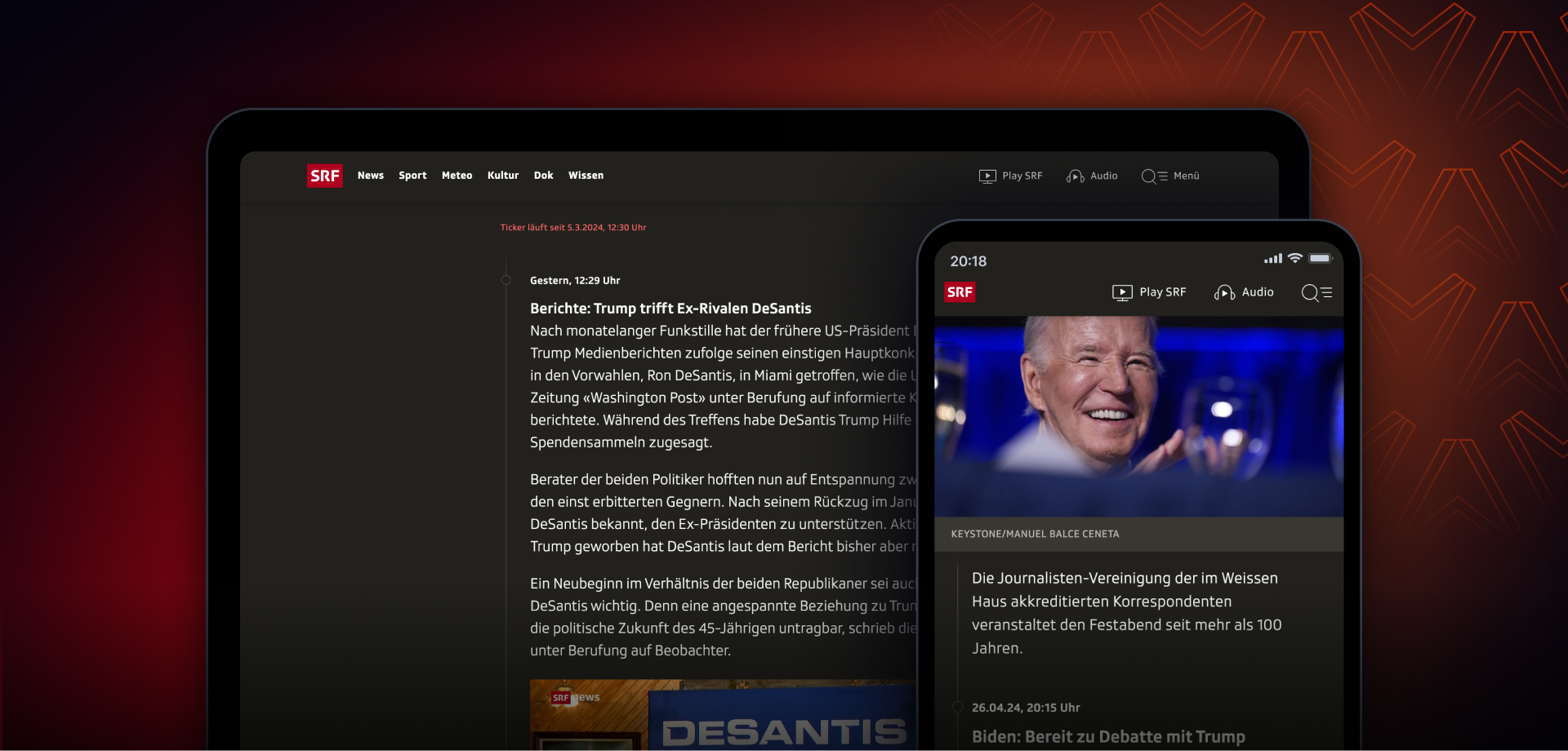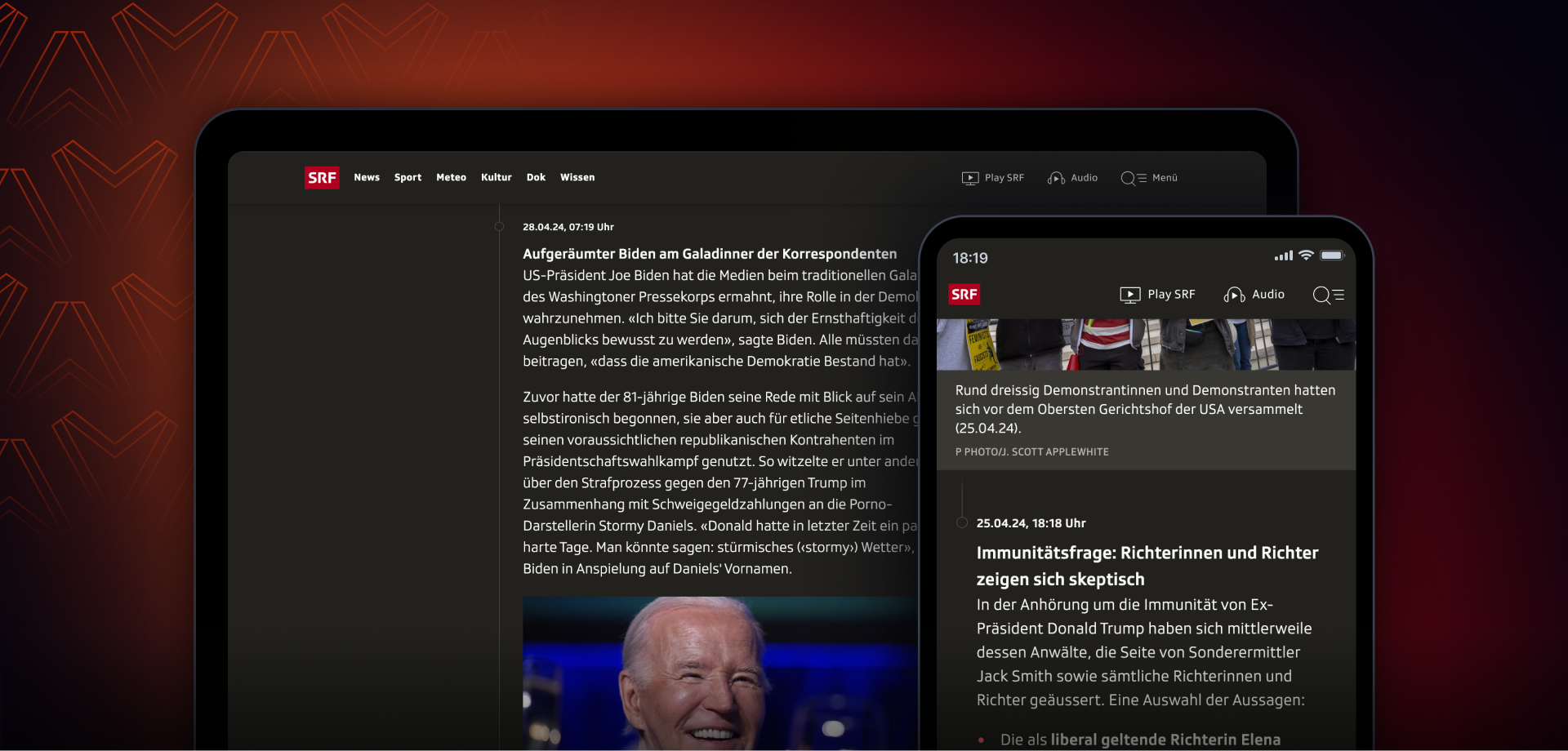SRF operates a live ticker platform for its millions of users, who use the site to find out the latest news and current affairs. For select stories the live feed is used to provide news updates, as they happen, which users can subscribe to and get alerted when something new is added. SRF prides themselves on fast, up to date content to keep its audiences informed as stories unfold and progress. But it is hard to predict how many users will be logging into the site at any one time, especially since stories spark varying levels of interest - and as a result varying levels of traffic. No matter what, the infrastructure has to be ready to handle traffic influxes for times when posts are (sometimes unexpectedly) popular - or even go viral.
SRF were using long polling, built within their own infrastructure, to manage their news feed updates. The frontend app requested updates from the server approximately every few seconds. In low traffic scenarios this wasn’t such a problem - but for popular stories, where lots of users were reading the news feed, the servers were hitting capacity. With the risk of diluting the user experience, SRF knew they needed to look for a new solution.





